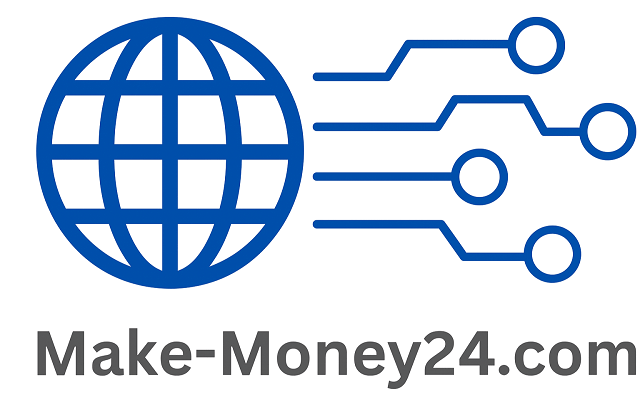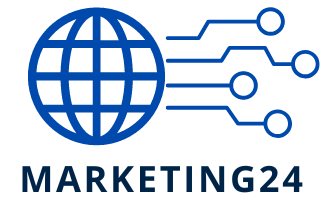In the ever-evolving world of freelancing, standing out in a crowded marketplace can be a daunting task. Choosing a freelance niche is not merely about selecting a particular skill set to market; it’s about carving out a unique space where your talents and passions can thrive. The right niche can help solidify your identity in the freelance universe, enabling potential clients to easily understand what you offer and why you’re the perfect choice for their specific needs.

How to Choose Your Freelance Niche
The first step in choosing your freelance niche is introspection. Reflect on your skills and passions to determine which areas resonate most with you. Be honest about your strengths and weaknesses, and consider how these might translate into a freelance career. For example, if you have a knack for storytelling and a passion for digital media, you might find a fulfilling niche in content creation or copywriting. This reflection not only highlights your core competencies but also ignites the elements of work that you’ll find rewarding, which is crucial for long-term motivation and success.
Market research is another critical component in selecting a lucrative niche. Investigate current trends in the freelance economy and align these findings with your skills. Tools like Google Trends or industry-specific forums can provide insights into what is currently in demand. If you’re an expert in sustainable fashion, for instance, track the growing consumer interest in eco-friendly products and identify how your expertise can fill gaps in this market. Choosing a niche where demand aligns with your skills increases your opportunities for work and establishes you as an expert in emerging trends.
Lastly, test your niche before diving in entirely. Start by offering your services on freelance platforms like Upwork or Freelancer and observe the response. This practical approach will help validate the interest in your niche and allow you to refine your offerings based on real-world feedback. Further, seek testimonials from your initial clients to build credibility. When you see positive responses and a steady demand, it’s a good indication that you’ve chosen a well-suited niche. This feedback loop is invaluable and empowers you to adjust your strategy, ensuring your niche is not only a reflection of your capabilities but also a sustainable career choice.
Building Your Personal Brand Online
In today’s digital age, personal branding has evolved from a career buzzword into a powerful tool for professionals across various industries. As boundaries blur between online and offline interactions, crafting a personal brand that resonates online is crucial for reaching a broader audience, establishing credibility, and opening up new professional opportunities. With the right strategies, individuals can effectively promote their expertise and create lasting impressions that attract potential clients.
The first step in building a compelling personal brand online is to define your niche and identify the unique value you offer. This involves a deep introspection to outline your strengths, expertise, and the values you wish to embody. For instance, a digital marketer specializing in organic SEO might focus on sharing insights about algorithm updates, content strategies, and case studies showing their impact. By narrowing down your focus, you can create targeted content that highlights your expertise and attracts the right audience.
Once you’ve defined your niche, it’s essential to create a consistent presence across various online platforms. This means developing a professional profile on LinkedIn, establishing an informative blog, and actively engaging on social media platforms that best serve your audience demographic. Visual elements also play a significant role; a professional headshot and a cohesive color palette can unify your brand. Consistency in messaging and visual identity helps reinforce your brand, making you recognizable and memorable to potential clients.
Promoting your brand involves leveraging content to position yourself as an industry thought leader. This can be achieved through guest blogging, participating in podcasts, and speaking at webinars. Sharing success stories and valuable insights via articles or videos can demonstrate your expertise and foster trust with your audience. It’s also crucial to engage with your audience by responding to comments, sharing relevant third-party content, and building a community around your brand. This not only amplifies your reach but also creates a network of potential clients who value and trust your expertise.
Best Practices for Remote Work
Remote work has become a defining feature of the modern employment landscape, allowing professionals the flexibility to operate from any location. However, this shift demands a reevaluation of work habits to ensure productivity and maintain a healthy work-life balance. Whether you’re new to remote work or a seasoned freelancer, understanding the best practices can make the difference between success and burnout.
Establishing a dedicated workspace is critical for remote work success. Having a specific area in your home designated for work helps create a mental separation between your professional and personal life. This space doesn’t have to be a full office; it can be as simple as a well-organized desk with essential tools at arm’s reach. Such a setup not only enhances focus and productivity but also signals to others that you’re in work mode, which can help minimize distractions. Investing in ergonomic furniture can prevent physical strain and contribute to a more comfortable and efficient workflow.
Structuring your day with a consistent routine is another cornerstone of effective remote work. It’s easy to fall into the trap of inconsistent work hours, especially with the freedom that comes from working at home. Instead, start your day at the same time every morning and plan scheduled breaks to recharge and refresh your mind. Using digital tools like calendar apps can help in setting clear boundaries and reminding you of essential tasks. Allocating time for deep work without interruptions can increase efficiency and provide a sense of accomplishment at the day’s end.
Fostering communication and collaboration, even from afar, is essential to maintain a cohesive team dynamic and ensure projects stay on track. Utilizing platforms such as Slack, Zoom, and Microsoft Teams can keep you connected with colleagues, facilitating a smoother flow of information. Regular check-ins and updates are crucial for accountability and morale, allowing remote workers to share their progress and receive feedback. Participating in these touchpoints not only helps with professional development but also nurtures a sense of belonging and reduces isolation, a common issue among remote workers.
Growing Long-Term Client Relationships
Building long-term relationships with clients is akin to nurturing a personal friendship; it requires time, attention, understanding, and, most importantly, trust. Unlike fickle clients who disappear after a single transaction, long-term clients contribute to the foundation of a stable and successful business. These relationships provide not only a steady source of income but also serve as valuable networks through which new business opportunities often emerge.
At the heart of any enduring client relationship lies effective communication. Professionals must prioritize regular check-ins, not just when projects are due or payments are delayed but also as a part of a genuine interest in understanding and meeting clients’ evolving needs. This ongoing dialogue ensures you are abreast of their shifting priorities and can adjust your services accordingly. For example, scheduling quarterly strategy meetings can help align goals, clear up potential misunderstandings, and demonstrate your commitment to your clients’ success, laying the groundwork for a sustained partnership.
Another cornerstone of building long-term client relationships is delivering consistent value. It’s not enough to simply meet expectations; exceeding them transforms a transactional relationship into a partnership. This can be achieved by continuously improving your offerings and integrating innovative solutions tailored to the client’s industry challenges. For instance, keeping your clients updated with the latest trends and technologies relevant to their sector not only provides them with a competitive edge but also underscores your proactive approach to their success. This level of service can distinguish you from competitors and reinforce client loyalty.
Trust is the binding factor in any long-term relationship. Consistently demonstrating integrity and reliability fosters trust, making clients more likely to stick by your side even during challenging times. Trust also frees up both parties to focus on strategic growth without the constant worry of reliability or authenticity. Sharing transparent reports and being forthcoming about potential issues can fortify this trust. As an example, if you foresee a delay in a project timeline, informing the client promptly and offering viable solutions can mitigate client dissatisfaction and strengthen the relationship in the long run. Ultimately, trust paves the way for stronger collaborations, cross-referrals, and an enduring business partnership.

